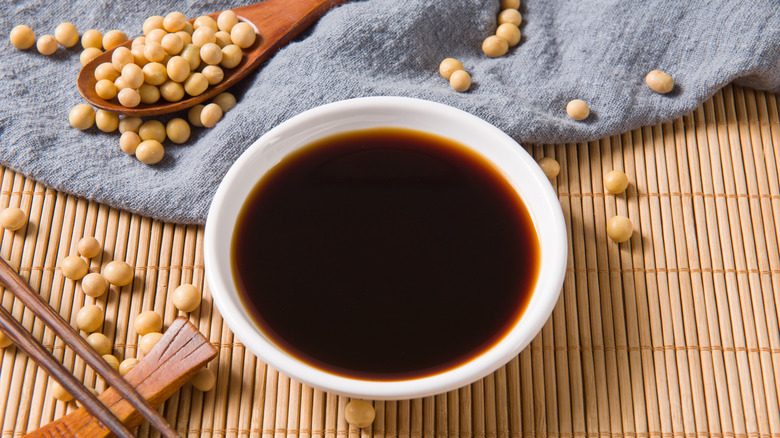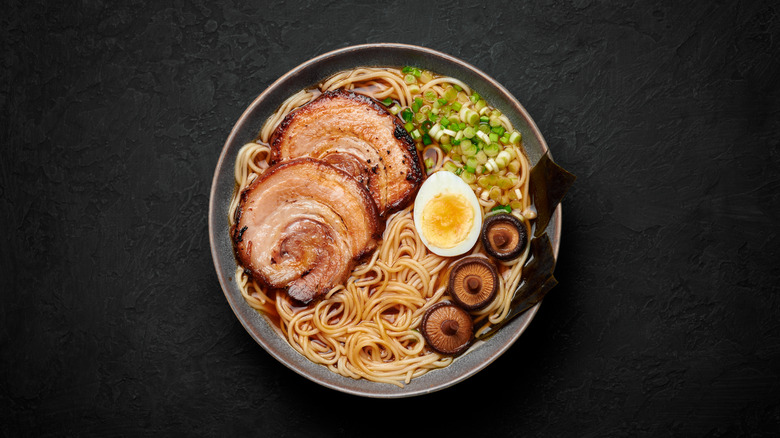Why You Should Keep A Container Of Shoyu Tare In Your Fridge
Japan is a playground for some of the best food around, and one of the country's culinary staples is a warm bowl of ramen. Noodles and toppings like nori, eggs, and kamaboko swim around in a salty broth that takes on different forms depending on which kind you order, per Gurunavi. One of the most popular kinds (among miso and shio) is shoyu ramen, which has a broth made of soy sauce and typically fish or meat (via Wok & Skillet).
The outlet explains that the key ingredient in shoyu is tare, which has a few different kinds. What's the secret stuff within shoyu tare? As Cook's Gazette discusses, the ingredient list typically consists of dried kombu, mirin, sake, brown sugar, niboshi (dried baby sardines), katsuobushi (tuna that's been dried and smoked, per Japanese Cooking 101), and soy sauce. If you're making some yourself, Cook's Gazette recommends usukuchi (a soy sauce that's not too dark, via Takahashi Market) for a better aesthetic; otherwise, you'll black out your broth.
If you don't eat ramen that often, you can still utilize shoyu tare in a myriad of other dishes, which is why you should keep a container of this in your fridge.
Versatile and easy to customize
Milk Street explains that shoyu tare is a Japanese mother sauce, which, aside from ramen, can be utilized on yakitori, salmon, and burger recipes for a major boost in flavor. If you're skeptical, try experimenting with some homemade fried rice or side dishes like roasted potatoes or sautéed spinach. And all you need is a splash or a few tablespoons, though it's probably best to start small, test the salt levels, and then add more shoyu tare as needed.
The customization options for shoyu tare are also an added benefit, as you can enhance the sauce with ginger, garlic, and/or dried shiitake mushrooms, Milk Street adds. A video from the Teiken Ramen Channel explains that you can also opt for classic, earthy, or spicy variations of shoyu tare. So, for instance, a more earthy tare would highlight bonito flakes, pink Himalayan rock salt, shiitake mushrooms, and koikuchi shoyu, which is known for its sweet and rich flavor profile. A spicier tare is likely to incorporate two types of shoyu: shiro and tamari, along with bonito flakes and ghost peppers.
As you can probably tell, shoyu tare can take on a different identity depending on which ingredients you utilize, which means even more interesting flavors for ramen, side dishes, and hearty entrées!

